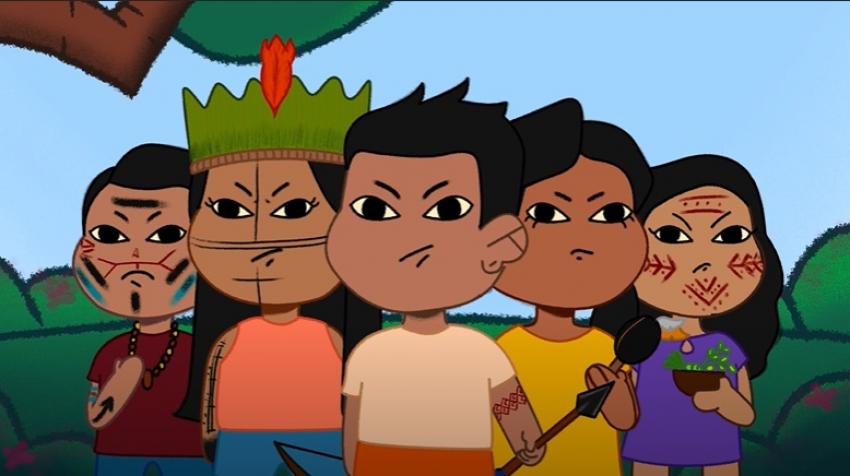In the heart of the Amazonas state, young Brazilian communicators had a powerful idea to teach prevention against COVID-19 in a soft and playful way for indigenous children. “I feel privileged to be part of something that can impact many people's lives,” says Anderson Teles Marques, 28-year-old video editor and photographer and member of the Coordination of Indigenous Organizations of the Brazilian Amazon (Coiab, in Portuguese).
The cartoon “Grand Warriors” was produced by youths from different places of Amazonas. Vera Tukano, 23, a radio producer, explains that the idea is to communicate the message that union is the best antidote against the coronavirus. "We decided to create this vision: we are a family, we are a group that fights the same disease."
The indigenous cultural components used in the story, as the language of the forest beings and the ancestral elements, were crucial for the children to understand how to prevent from the disease. “We decided to make a cartoon for children, so that we could use an easier language that everybody could understand”, explains Anderson.
The movie was produced by Coiab in partnership with UNICEF and Oswaldo Cruz Foundation (Fiocruz) and is part of the Amazonian Indigenous Peoples Against COVID-19 (Piaac).
Challenges and results
“One challenge was the internet connection, because they (youths) are from different areas in the Amazon”, explains Anderson. Vera says that many colleagues didn´t engage in the discussions due to the same problem. "Sometimes you could only access internet during the day and meetings were at night."
Adding COVID-19's prevention measures in the script was also a challenging process. “The difficulties were to place the elements such as mask, hand sanitizer and vaccination in a way that would not break the immersion in the story”, says Anderson.
The audience of “Grand Warriors” was rewarding. More than 2,000 views on Brazilian UNICEF's social media. The idea is to reach indigenous peoples in other countries. In local communities, the results were also outstanding. “Youths reported that in their villages, some people cried because the story made them feel many emotions,” told Anderson.




